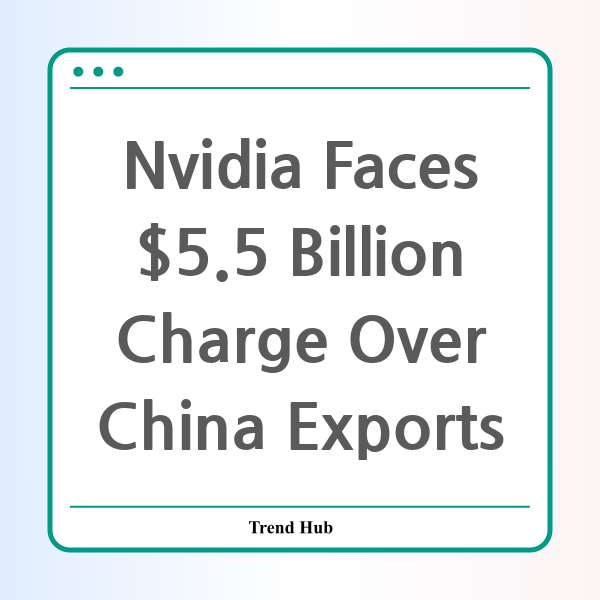* This website participates in the Amazon Affiliate Program and earns from qualifying purchases.

Is Nvidia's Growth Stalling Due to Export Restrictions?
Nvidia, a leader in the semiconductor industry, has recently announced a staggering quarterly charge of approximately $5.5 billion. This financial impact is directly linked to the export of its H20 graphics processing units (GPUs) to China and various other markets. As we delve deeper into this topic, we will explore how U.S. government policies are influencing Nvidia’s operations and the broader implications for the technology sector.
Last year, under the Biden administration, the U.S. imposed restrictions on AI chip exports, tightening the reins further in the year following. These regulations were enacted to curb the potential military applications of advanced processors that could be developed using these technologies. The news of Nvidia’s charge is a stark reminder of how these evolving export controls could substantially affect the revenue of one of the most promising tech companies.
The H20 chip, intended for the Chinese market, was designed specifically to comply with U.S. export restrictions, aiming to mitigate some of the financial fallout. Originally projected to generate between $12 billion and $15 billion in revenue for 2024, the potential financial implications are now in jeopardy.
Nvidia’s CEO, Jensen Huang, disclosed in earlier earnings calls that revenue from China had already plummeted to half of its levels prior to the introduction of export controls. In addition, Huang emphasized that competition within China is becoming increasingly fierce, adding pressure on Nvidia's market position.
The design of the H20 chip is interesting as it is built upon the Hopper architecture introduced back in 2022. While comparable chips such as the H100 and H200 are utilized in the U.S. and other nations, the H20 falls short regarding interconnection speeds and bandwidth. Therefore, even though it was compliant with export regulations, it may not be capable of rivaling its more advanced counterparts.
Nvidia is now turning its focus toward optimizing and selling its latest generation of AI chips known as Blackwell, a shift in strategy that may help navigate the choppy waters of international trade. However, the company is also bracing for new restrictions that are set to take effect next month, which could further constrict its ability to compete effectively on a global scale.
In a recent filing with the SEC, Nvidia mentioned that the U.S. government indicated that licensing requirements for H20 chips would remain in place indefinitely. This lack of clarity around export regulations raises concerns about future revenues and the company's overall competitiveness in the tech industry, especially as other countries ramp up their semiconductor production.
Ultimately, the challenges facing Nvidia are multi-faceted and signify a larger narrative about the direction of U.S. tech policy. The current climate of regulatory scrutiny could potentially stifle competition and may even erode U.S. competitive advantages in technology.
As we approach Nvidia's upcoming fiscal first-quarter results on May 28, stakeholders will be eager to see how the company navigates these turbulent waters and what adjustments it makes in response to regulatory changes. Investors will be watching closely to determine whether this tech giant can maintain its stronghold in the marketplace amidst escalating restrictions and competition.
In conclusion, Nvidia’s $5.5 billion charge associated with the export of H20 chips illustrates the significant impact of government regulations on technological innovation and market dynamics. It serves as a crucial point of examination for the future of technology companies operating in an increasingly scrutinized global market.
* This website participates in the Amazon Affiliate Program and earns from qualifying purchases.